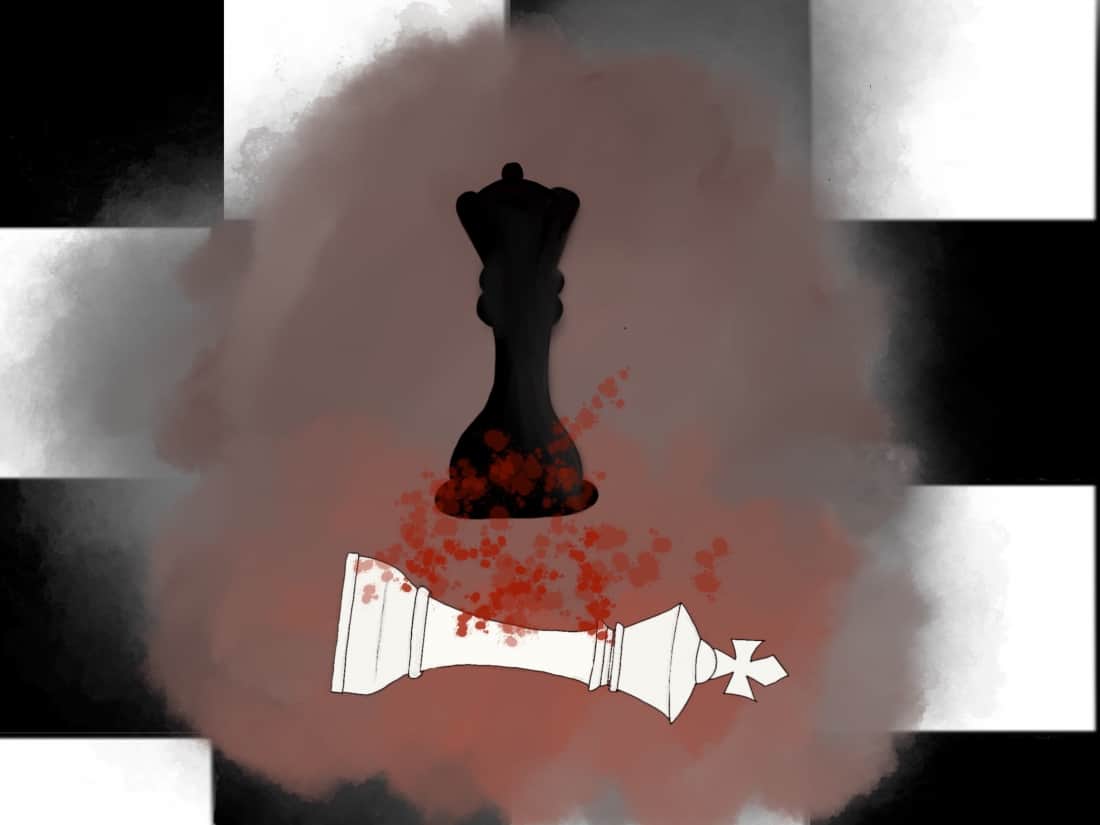
A show about chess doesn’t sound all that thrilling. However, The Queen’s Gambit proves to be compelling, toeing the line between genius and mad genius.
The limited Netflix original show released on Oct. 23 is an adaptation of Walter Tevis’ 1983 book by the same name. Set between the 50s and 60s, it covers the rise to stardom of chess prodigy Beth Harmon, played by Anya-Taylor Joy, followed by her fall. The seven-episode mini-series delves into the themes of drug addiction, alcoholism and feminism.
What is interesting about the show is summarized well in a couple of words from the trailer — “creativity and psychosis often go hand in hand.” The mini-series explores this idea of a fine-line between being a genius and mental illness.
Harmon’s upbringing and the mystery surrounding her mother, Alice Harmon, is introduced early in the series. The audience sees glimpses of Beth’s complicated parents, especially of her mother who was her primary caretaker. The protagonist was orphaned at a young age, with Alice uttering her last words to Beth, “Close your eyes,” before colliding with an oncoming car.
The scene by itself makes you question what led Beth’s mother to her demise. Episode after episode, Beth’s fragmented memories reveal more about her mother’s state before the incident. In some scenes, her mother is shown as a mathematical genius, along with scenes that show her dealing with untreated mental illness.
It is with these glimpses of Beth’s memories that the show keeps its viewers on a tightrope, balancing the main protagonist’s genius chess plays and her self-destruction presented as self-awakening.
Scott Frank, the director of the mini-series, starts the first episode with a sense of urgency as Beth hastens into a male-dominated room full of chess players. It is a clever misdirection, as the show quickly shifts focus, and takes you back a decade to the beginnings of Beth’s love for chess.
From there on, the episodes take you through her journey of becoming and unbecoming the person she wants to be.
Ultimately, as the main protagonist struggles with drug addiction and alcoholism, two of the show’s main themes, a more urgent race overshadows Beth’s desire to be the best chess player — a race against time. Will she have enough time to achieve her goal or will she be her own destruction? Will she find peace with what happened to her mother?
Will she be the genius chess player she desires to be or will her creativity fall prey to her self-destruction?
Overall, the mini-series brings Taylor-Joy’s incredible acting to the limelight. Her portrayal of Beth Harmon draws you into the world of chess. She perfectly balances Harmon’s awkward, demure character without forgetting the impact of her early-set addiction, difficult family situation and her mother’s untimely death.
The performances of Taylor-Joy’s co-stars makes some episodes nail-biting and others tear-jerking. Moses Ingram’s portrayal of Jolene, Harmon’s first friend in the orphanage, gives the audience an easily lovable character with sassy remarks and relentless support for Beth. Bill Camp’s role as Mr. Shaibal, Beth’s first chess teacher and the orphanage’s custodian, shows the importance of not forgetting the people introduced in the first episode.
The casting of the mini-series fits the story and the time period perfectly and effortlessly. Other notable actors from the show are Harry Mulling, known for his role as Dudley Vernon from the Harry Potter movie series, and Thomas Brodie-Sangster, known for his role as Newt from The Maze Runner movie series.
To say that a show about chess can be exciting is an understatement for The Queen’s Gambit. With so many twists and turns, it’s a must-watch that will draw you into the world of strategic chess.
—
J.C. Balicanta Narag | Editor-in-Chief
Graphic: Kristine Jones A. Del Socorro | Culture Editor